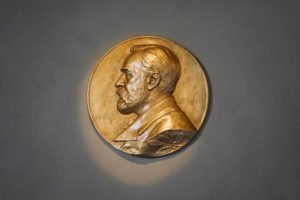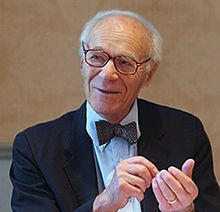
Lawrence Robert Klein
1920-2013

Lawrence R. Klein received the Nobel Prize in 1980 for “the creation of economic models and their application to the analysis of economic fluctuations and economic policies.” Klein began model building while still a graduate student. After getting his Ph.D. from MIT, he moved on to the Cowles Commission for Research in Economics, which was then at the University of Chicago. While there he built a model of the U.S. economy, using jan tinbergen’s earlier model as a starting point, to forecast economic conditions and to estimate the impact of changes in government spending, taxes, and other policies.
In 1946 the conventional wisdom was that the end of World War II would sink the economy into a depression for a few years. Klein used his model to counter the conventional wisdom. The demand for consumer goods that had been left unsatisfied during the war, he argued, plus the purchasing power of returning soldiers, would prevent a depression. Klein was right. Later he predicted correctly that the end of the Korean War would bring only a mild recession.
Klein moved to the University of Michigan, where he proceeded to build bigger and more complicated models of the U.S. economy. The Klein-Goldberger model, which he built with then graduate student Arthur Goldberger, dates from that time. But in 1954, after being denied tenure because he had been a member of the Communist Party from 1946 to 1947, Klein went to Oxford University. There he built a model of the British economy.
In 1958 Klein joined the Department of Economics at the University of Pennsylvania. He has been a professor of economics and finance at the university’s Wharton School since 1968. During his tenure there he built the famous Wharton model of the U.S. economy, which contains more than a thousand simultaneous equations that are solved by computers.
Klein was coordinator of Jimmy Carter’s economic task force in 1976, but he turned down an invitation to join Carter’s new administration. In 1977 he was president of the American Economic Association.
About the Author
David R. Henderson is the editor of The Concise Encyclopedia of Economics. He is also an emeritus professor of economics with the Naval Postgraduate School and a research fellow with the Hoover Institution at Stanford University. He earned his Ph.D. in economics at UCLA.
Selected Works
Related Entries
Related Links
Arnold Kling, MIT’s Model Economics Department, at Econlib, June 1, 2015.
